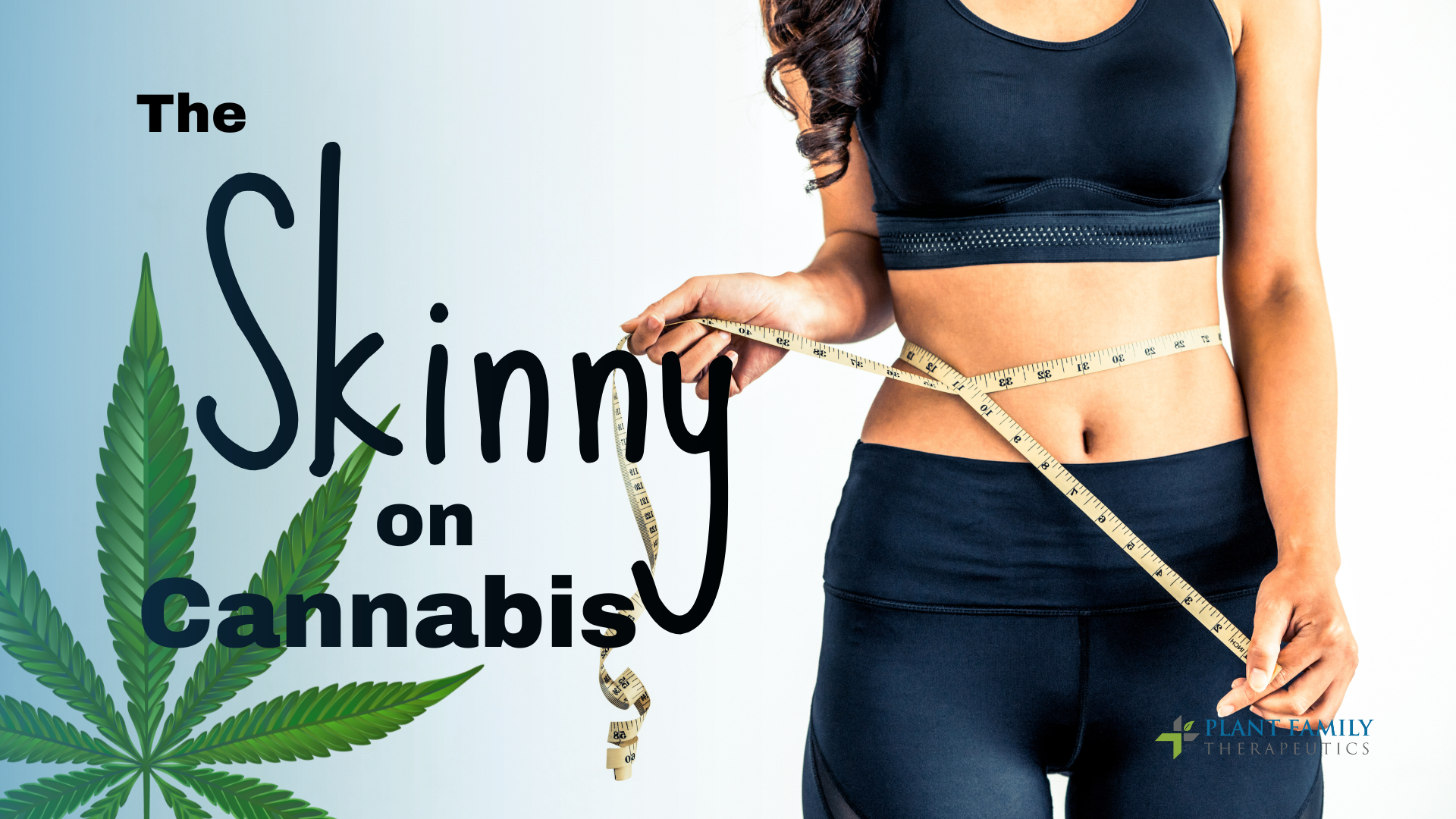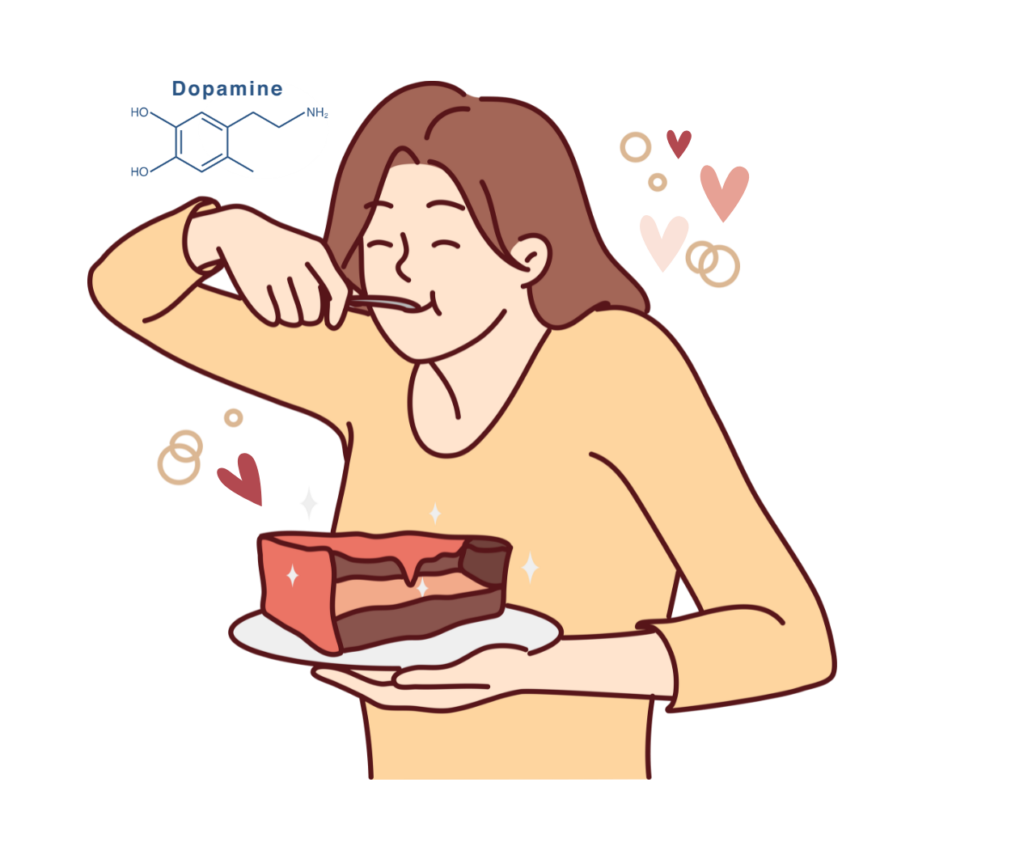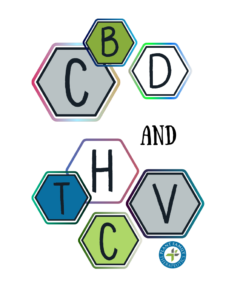This website requires you to be 21 years or older to enter. Please confirm your age below to continue.

February 2023 by Sandy Yanez
If you’ve consumed cannabis THC before, chances are you have encountered the “munchies.” It’s one of the well-known effects – that compelling and intense feeling of hunger users tend to get when they consume cannabis, specifically THC.
For patients with cancer, HIV, or AIDS, cannabis is effective in the reduction of nausea and in increasing food intake. But what about users that don’t want to eat everything in sight? Well, there are a few cannabinoids that help to reduce munchies. First, let’s take a look at what causes munchies
What causes the munchies?
There are a few reasons why cannabis and the actions it produces within the body can stimulate hunger. First, THC can elevate your dopamine levels, which is a feel-good messenger (neurotransmitter) that plays a role in our reward system. Looking at this from an evolutionary standpoint, the system was designed to reward you when you do the things you need to do to survive like eating,

drinking, competing to survive, and reproducing.
Secondly, THC induces the munchies by binding to CB1 receptors that stimulate your appetite in a few ways: in the brain, the basal ganglia are affected which then enhances eating pleasure, in the limbic forebrain the taste of food is enhanced, in the stomach and small intestine the regulation of ghrelin is increased, which is an appetite-stimulating hormone and the hypothalamus and rhombencephalon are affected, which helps regulate food intake.
All of this going on is tricking your brain into thinking that you are hungry and not hungry for just anything. See, the brain is tricking you into wanting high-calorie fats, salts, and sugars – which in turn stimulates more dopamine. This becomes a cycle until dopamine burns out and is no longer excited over THC, food, pleasure, motivation, and more. This continued cycle of increased THC, fats, salts, and sugars can lead to depression and disease in the body.
Are there other cannabinoids that stimulate hunger?
Yes, there are two that have been studied and have demonstrated hyperphagia or hunger stimulation. Cannabidiol or CBN is a non-psychoactive cannabinoid that helps with pain and inflammation, and Cannabigerol or CBG, is another non-psychoactive cannabinoid and for many is a big appetite stimulant that also helps with pain and inflammation.
How do I deal with the munchies?
Get yourself prepared before your session to help you deal with the dreaded munchies.

Listen to Your Body: If you are hungry, eat. If you are bored, find something to do. Don’t eat because you are bored.
The skinny cannabinoids
Tetrahydrocannabivarin, or THCV, is a minor cannabinoid found mainly in African-based Sativa or hybridized African strains of cannabis like Durban Poison, Doug’s Varian, and Jack the Ripper. THC and THCV are similar in structure, but unlike THC, THCV has a short-lived cerebral buzz that kicks in quickly and lasts a fraction of the time compared to the buzz time from THC. THCV is best known for producing a clear-headed, stimulating buzz that provides a burst of mental energy.
THCV, in its pure form (not mixed with any other cannabinoid or terpene), not only increases metabolic energy, but it also acts as a blocking agent on specific CB1 receptors that stimulate hunger, and due to this unique action, it has been dubbed “diet weed” or “weederall” by consumers.
Note: THCV does induce a very short-lived head high when taken in large doses, so if you’re looking to get stoned with THCV – look elsewhere. Consuming large amounts of a stimulant can cause an increase in pain, induce anxiety and paranoia, and heart palpitations. A study found 5mg to 7mg of THCV is enough to subdue hunger. The easy way to look at this – THCV in a low dose like 5mg will stop the munchies by decreasing CB1 activity, but a higher dose will give you munchies by activating the CB1 receptor.
Other benefits of THCV include anticonvulsive, neuroprotective, and anti-inflammatory properties.
A second cannabinoid that helps with weight loss is Cannabidiol or CBD. This major cannabinoid is found mainly in the hemp version of cannabis. CBD does not actually stop hunger like THCV, but research has found that CBD plays multiple roles in how the body interacts with fat. The study found that CBD helps convert white fat cells into brown fat cells and also stimulates the body to break down fats more efficiently.

Brown fat cells are a more active form of fat and burn off energy as heat, meaning that they actually burn calories. How this is done is the important part. CBD will convert the fat while you are working out. Yes, you need to get physical and move it! A person who adds CBD to their weight loss plan without including exercising and eating healthfully may not see any benefits.
Further research notes a close link between obesity and several metabolic disorders, such as type 2 diabetes, high blood pressure, high cholesterol, and also CBD appeared to decrease blood sugar levels and increase markers for liver health.
Some other benefits of CBD include its ability to help with anxiety and depression, treatment of epilepsy, reduces symptoms of PTSD, treat addiction, alleviate ALS symptoms, reduce pain, ease diabetic complications, and protects against neurological diseases.
Take Away.
While the thought of cannabis helping you lose weight may sound appealing, THCV is still pretty new when it comes to proven benefits in humans and more definitive work must be done to prove its efficacy conclusively. Diet and exercise should be the first go-to when thinking about weight loss, but medical cannabis, with either CBD or THCV, seems promising!
In the future, THCV may serve as a much-needed lifeline for people who are obese or have diabetes. It just goes to show there’s still so much we need to learn about cannabis and all the incredible potential it contains.
References
Abioye, A., Ayodele, O., Marinkovic, A., Patidar, R., Akinwekomi, A., & Sanyaolu, A. (2020). Δ9-Tetrahydrocannabivarin (THCV): a commentary on potential therapeutic benefit for the management of obesity and diabetes. Journal of cannabis research, 2(1), 6. https://doi.org/10.1186/s42238-020-0016-7
Brierley, D. I., Samuels, J., Duncan, M., Whalley, B. J., & Williams, C. M. (2016). Cannabigerol is a novel, well-tolerated appetite stimulant in pre-satiated rats. Psychopharmacology, 233(19-20), 3603–3613. https://doi.org/10.1007/s00213-016-4397-4
Dong, Z., Gong, H., Chen, Y., Wu, H., Wu, J., Deng, Y., & Song, X. (2018). LH-21, A Peripheral Cannabinoid Receptor 1 Antagonist, Exerts Favorable Metabolic Modulation Including Antihypertensive Effect in KKAy Mice by Regulating Inflammatory Cytokines and Adipokines on Adipose Tissue. Frontiers in endocrinology, 9, 167. https://doi.org/10.3389/fendo.2018.00167
Jadoon, K. A., Ratcliffe, S. H., Barrett, D. A., Thomas, E. L., Stott, C., Bell, J. D., O’Sullivan, S. E., & Tan, G. D. (2016). Efficacy and Safety of Cannabidiol and Tetrahydrocannabivarin on Glycemic and Lipid Parameters in Patients With Type 2 Diabetes: A Randomized, Double-Blind, Placebo-Controlled, Parallel Group Pilot Study. Diabetes care, 39(10), 1777–1786. https://doi.org/10.2337/dc16-0650
Parray, H. A., & Yun, J. W. (2016). Cannabidiol promotes browning in 3T3-L1 adipocytes. Molecular and cellular biochemistry, 416(1-2), 131–139. https://doi.org/10.1007/s11010-016-2702-5
Riedel, G., Fadda, P., McKillop-Smith, S., Pertwee, R. G., Platt, B., & Robinson, L. (2009). Synthetic and plant-derived cannabinoid receptor antagonists show hypophagic properties in fasted and non-fasted mice. British journal of pharmacology, 156(7), 1154–1166. https://doi.org/10.1111/j.1476-5381.2008.00107.x
Rossi, F., Punzo, F., Umano, G. R., Argenziano, M., & Miraglia Del Giudice, E. (2018). Role of Cannabinoids in Obesity. International journal of molecular sciences, 19(9), 2690. https://doi.org/10.3390/ijms19092690
Tudge, L., Williams, C., Cowen, P. J., & McCabe, C. (2014). Neural effects of cannabinoid CB1 neutral antagonist tetrahydrocannabivarin on food reward and aversion in healthy volunteers. The international journal of neuropsychopharmacology, 18(6), pyu094. https://doi.org/10.1093/ijnp/pyu094
Wargent, E. T., Zaibi, M. S., Silvestri, C., Hislop, D. C., Stocker, C. J., Stott, C. G., Guy, G. W., Duncan, M., Di Marzo, V., & Cawthorne, M. A. (2013). The cannabinoid Δ(9)-tetrahydrocannabivarin (THCV) ameliorates insulin sensitivity in two mouse models of obesity. Nutrition & diabetes, 3(5), e68. https://doi.org/10.1038/nutd.2013.9